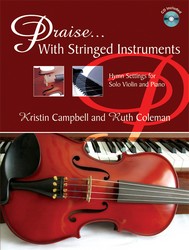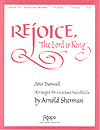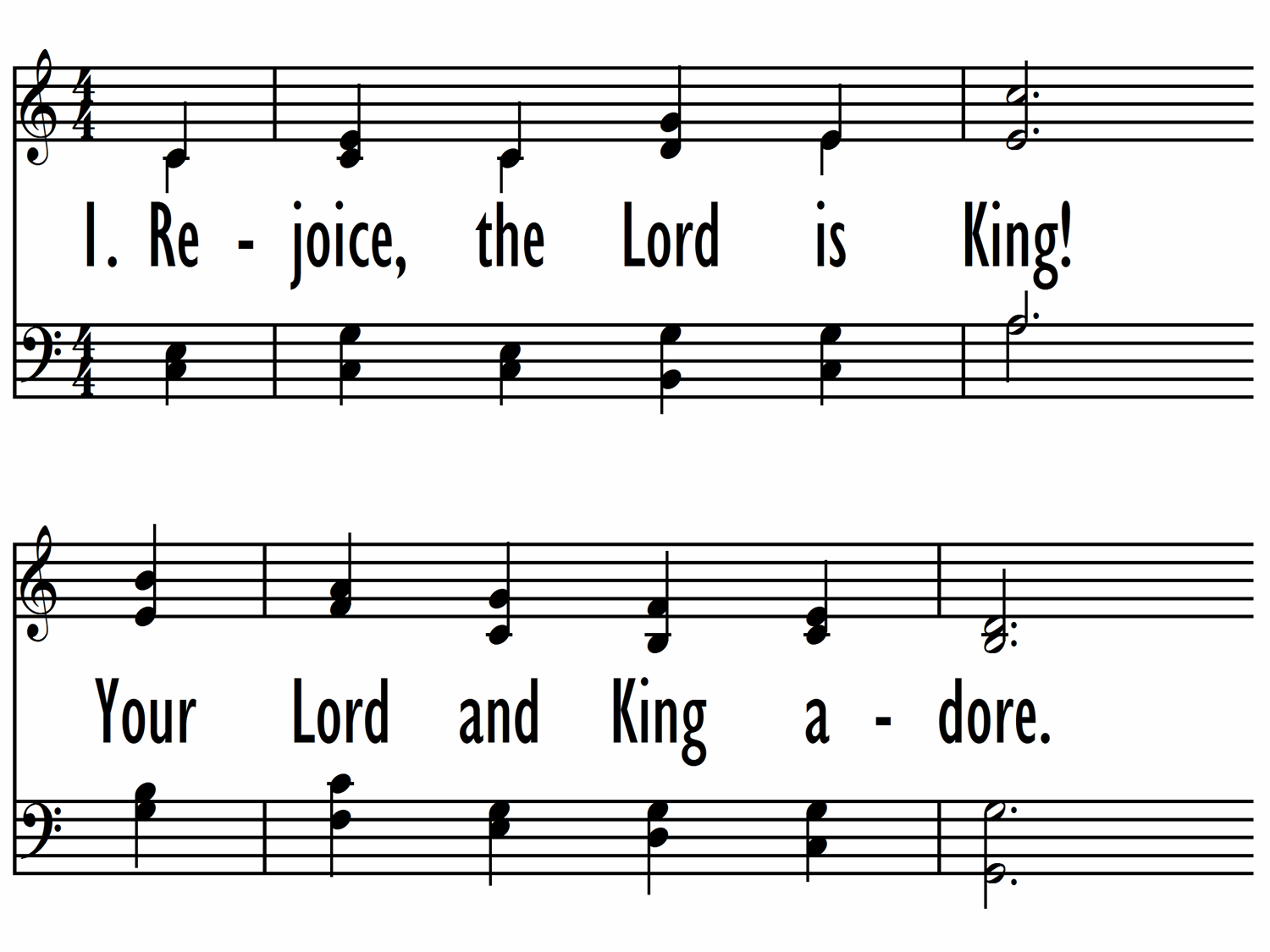- |
User Links
Rejoice, the Lord is King!

Rejoice, the Lord is King: Your Lord and King adore
Author: Charles Wesley (1744)Published in 742 hymnals
Printable scores: PDFAudio files: MIDI, Recording
Representative Text
1 Rejoice, the Lord is King:
Your Lord and King adore!
Rejoice, give thanks and sing,
And triumph evermore.
Lift up your heart,
Lift up your voice!
Rejoice, again I say, rejoice!
2 Jesus, the Savior, reigns,
The God of truth and love;
When He has purged our stains,
He took his seat above;
Lift up your heart,
Lift up your voice!
Rejoice, again I say, rejoice!
3 His kingdom cannot fail,
He rules o'er earth and heav'n;
The keys of death and hell
Are to our Jesus giv'n:
Lift up your heart,
Lift up your voice!
Rejoice, again I say, rejoice!
4 Rejoice in glorious hope!
Our Lord and judge shall come
And take His servants up
To their eternal home:
Lift up your heart,
Lift up your voice!
Rejoice, again I say, rejoice!
Baptist Hymnal, 1991
Author: Charles Wesley
 Charles Wesley, M.A. was the great hymn-writer of the Wesley family, perhaps, taking quantity and quality into consideration, the great hymn-writer of all ages. Charles Wesley was the youngest son and 18th child of Samuel and Susanna Wesley, and was born at Epworth Rectory, Dec. 18, 1707. In 1716 he went to Westminster School, being provided with a home and board by his elder brother Samuel, then usher at the school, until 1721, when he was elected King's Scholar, and as such received his board and education free. In 1726 Charles Wesley was elected to a Westminster studentship at Christ Church, Oxford, where he took his degree in 1729, and became a college tutor. In the early part of the same year his religious impressions were much deepene… Go to person page >
Charles Wesley, M.A. was the great hymn-writer of the Wesley family, perhaps, taking quantity and quality into consideration, the great hymn-writer of all ages. Charles Wesley was the youngest son and 18th child of Samuel and Susanna Wesley, and was born at Epworth Rectory, Dec. 18, 1707. In 1716 he went to Westminster School, being provided with a home and board by his elder brother Samuel, then usher at the school, until 1721, when he was elected King's Scholar, and as such received his board and education free. In 1726 Charles Wesley was elected to a Westminster studentship at Christ Church, Oxford, where he took his degree in 1729, and became a college tutor. In the early part of the same year his religious impressions were much deepene… Go to person page >Text Information
Related Texts
| First Line: | Rejoice, the Lord is King: Your Lord and King adore |
| Title: | Rejoice, the Lord is King! |
| Author: | Charles Wesley (1744) |
| Meter: | 6.6.6.6.8.8 |
| Language: | English |
| Refrain First Line: | Lift up your heart, lift up your voice |
| Copyright: | Public Domain |
- (hymns)
- (hymns)
- (hymns)
- (hymns)
- (hymns)
- (hymns)
- (hymns)
- (hymns)
- (hymns)
- (hymns)
- (hymns)
- (hymns)
- (hymns)
- (hymns)
- (hymns)
- (hymns)
- (hymns)
- (hymns)
- (hymns)
- (hymns)
- (hymns)
- (hymns)
- (hymns)
- (hymns)
- (hymns)
- (hymns)
- (hymns)
- (hymns)
- (hymns)
- (hymns)
- (hymns)
- (hymns)
- (hymns)
- (hymns)
- (hymns)
- (hymns)
- (hymns)
- (hymns)
- (hymns)
- (hymns)
- (hymns)
- (hymns)
- (hymns)
- (hymns)
- (hymns)
- (hymns)
- (hymns)
- (hymns)
- (hymns)
- (hymns)
- (hymns)
- (hymns)
- (hymns)
- (hymns)
- (hymns)
- (hymns)
- (hymns)
- (hymns)
- (hymns)
- (hymns)
- (hymns)
- (hymns)
- (hymns)
- (hymns)
- (hymns)
- (hymns)
- (hymns)
- (hymns)
- (hymns)
- (hymns)
- (hymns)
- (hymns)
- (hymns)
- (hymns)
- (hymns)
- (hymns)
- (hymns)
- (hymns)
- (hymns)
- (hymns)
- (hymns)
- (hymns)
- (hymns)
- (hymns)
- (hymns)
- (hymns)
- (hymns)
- (hymns)
- (hymns)
- (hymns)
- (hymns)
- (hymns)
- Year A, Christmas season, Christmas Day
- Year A, Easter season, Ascension of the Lord
Related to Acts 1 (NPM) - Year A, Ordinary Time, Proper 18 (23)
- Year A, Ordinary Time, Proper 23 (28)
This is recommended for Year A, Ordinary Time, Proper 23 (28) by 2 hymnal lectionary indexes including Lift Up Your Hearts: psalms, hymns, and spiritual songs #224. - Year A, Ordinary Time, Proper 27 (32)
This is recommended for Year A, Ordinary Time, Proper 27 (32) by 2 hymnal lectionary indexes including Glory to God: the Presbyterian Hymnal #363 and Lift Up Your Hearts: psalms, hymns, and spiritual songs #224. - Year A, Ordinary Time, Proper 27 (32)
- Year A, Ordinary Time, Proper 29 (34)
This is recommended for Year A, Ordinary Time, Proper 29 (34) by 4 hymnal lectionary indexes including Glory to God: the Presbyterian Hymnal #363 and Lift Up Your Hearts: psalms, hymns, and spiritual songs #224. - Year B, Epiphany season, Eighth Sunday
This is recommended for Year B, Epiphany season, Eighth Sunday by 2 hymnal lectionary indexes including Glory to God: the Presbyterian Hymnal #363. - Year B, Ordinary Time, Proper 27 (32)
This is recommended for Year B, Ordinary Time, Proper 27 (32) by 2 hymnal lectionary indexes including Glory to God: the Presbyterian Hymnal #363. - Year B, Ordinary Time, Proper 29 (34)
This is recommended for Year B, Ordinary Time, Proper 29 (34) by 4 hymnal lectionary indexes including Glory to God: the Presbyterian Hymnal #363 and Lift Up Your Hearts: psalms, hymns, and spiritual songs #224. - Year C, Advent, Third Sunday
This is recommended for Year C, Advent, Third Sunday by 3 hymnal lectionary indexes including Glory to God: the Presbyterian Hymnal #363 and Lift Up Your Hearts: psalms, hymns, and spiritual songs #224. - Year C, Advent, Third Sunday
- Year C, Easter season, Second Sunday
This is recommended for Year C, Easter season, Second Sunday by 2 hymnal lectionary indexes including Lift Up Your Hearts: psalms, hymns, and spiritual songs #224. - Year C, Ordinary Time, Proper 5 (10)
This is recommended for Year C, Ordinary Time, Proper 5 (10) by 2 hymnal lectionary indexes including Lift Up Your Hearts: psalms, hymns, and spiritual songs #224. - Year C, Ordinary Time, Thanksgiving Day
This is recommended for Year C, Ordinary Time, Thanksgiving Day by 3 hymnal lectionary indexes including Glory to God: the Presbyterian Hymnal #363 and Lift Up Your Hearts: psalms, hymns, and spiritual songs #224. - Year C, Ordinary Time, Proper 29 (34)
This is recommended for Year C, Ordinary Time, Proper 29 (34) by 3 hymnal lectionary indexes including Lift Up Your Hearts: psalms, hymns, and spiritual songs #224. - Year C, Ordinary Time, Proper 29 (34)
Thanksgiving hymn
English
- A Choice Collection of Hymns and Spiritual Songs: intended for the edification of sincere Christians of all denominations #LXXVI
- A Choice Collection of Hymns, in which are some never before printed #CXXXIV
- A Choice Selection of Evangelical Hymns, from various authors: for the use of the English Evangelical Lutheran Church in New York #88
- A Choice Selection of Hymns. 6th ed. #d214
- A Church of England Hymn Book: adapted to the daily services of the Church throughout the year #394
- A Collection of Hymn Tunes from the most modern and approved authors #VI
- A Collection of Hymns Adapted to the Use of the Methodist Episcopal Church #d496
- A Collection of Hymns Adapted to the use of the Methodist Episcopal Church Including the Whole Collection of the Rev. J. Wesley #ad496
- A Collection of Hymns and a Liturgy for the Use of Evangelical Lutheran Churches: to which are added prayers for families and individuals #172
- A Collection of Hymns and a Liturgy: for the use of Evangelical Lutheran Churches, to which are added prayers for families and individuals (New and Enl. Stereotype Ed.) #172 10 shown out of 481
French
Spanish
Notes
Scripture References:
st. 2 = Rev. 1:18
st. 3 = Acts 5:31, Heb. 1:3
st. 4 = 1 Cor. 15:52, 1 Thess. 4:16, Rev. 20:11-15
ref. = Phil. 4:4
Charles Wesley (PHH 267) wrote this text for Easter and Ascension in six stanzas. First published in John Wesley's Moral and Sacred Poems (1744), the text was also published in Charles Wesley's Hymns for our Lord's Resurrection (1746). The original stanzas 2 and 5 are not included.
The text rejoices in the kingship of Christ (st. 1) whose rule extends "o'er earth and heaven" (st. 2). All will bow the knee to Christ (st. 3) when he returns in glory to judge "the living and dead" (st. 4). The refrain line based on Philippians 4:4, “Rejoice in the Lord always. I will say it again: Rejoice,” is the keynote of the entire text.
Liturgical Use:
Ascension; Easter; a great hymn of praise suitable for any worship service (fits well with the royal psalms in the Old Testament); funeral or memorial service.
--Psalter Hymnal Handbook
=================
Rejoice, the Lord is King. C. Wesley. [Easter or Ascension.] This is No. viii. of 16 hymns printed in 1746 as Hymns for Our Lord's Resurrection. It is in 6 st.anzas of 6 lines. It had previously appeared in J. Wesley's Moral and Sacred Poems, 1744. (P. Works, iv. p. 140.) It has been included, either in full or in part, in most hymnbooks of any moment from Whitefield’s, in 1753, to Thring's, in 1882, with the result that it is in extensive use in all English-speaking countries. Curiously enough, however, it was not given in the Wesleyan Hymn Book until the revised ed. of 1875.
A cento for harvest beginning with the first stanza is found in some Unitarian hymnbooks both old and new, including Ellen Courtauld's Psalms, Hymns and Anthems, 1860. It is in 5 st., the first stanza and lines5,6, of each of the others being from this hymn, whilst the rest are by John Taylor in Enfield's Norwich Selection of Hymns, 1795. In R. Bingham's Hymno. Christ. Latina, 1871, st. i., ii., iv., vi., slightly altered, are rendered into Latin as, "Rex est Dominus! Laetantes."
--John Julian, Dictionary of Hymnology (1907)
Tune
DARWALLComposed by John Darwall (b. Haughton, Staffordshire, England, 1731; d. Walsall, Staffordshire, England, 1789), DARWALL'S 148TH was first published as a setting for Psalm 148 in Aaron William's New Universal Psalmodist (1770) with only soprano and bass parts. The harmonization dates from the ninete…
GOPSAL
For Leaders
Text:
Charles Wesley wrote this hymn, and it was first published in 1744 in his brother John’s Collection of Moral and Sacred Poems. Charles later published it in his own anonymous Hymns for our Lord’s Resurrection in 1746. The theme of the text is celebration of Christ as King and Lord of all the earth.
Wesley originally wrote six stanzas, but hymnals vary on which of these are included today. The original first and third (“His kingdom cannot fail”) stanzas are always included in modern hymnals, while the fourth (“He sits at God’s right hand”) appears only occasionally, and the fifth (“He all His foes shall quell”) is almost always omitted. The other two stanzas (the second, “Jesus the Savior reigns,” and sixth, “Rejoice in glorious hope”) are usually included. Each stanza concludes with a refrain, which is identical for stanzas one through five. Stanza six originally had a unique refrain, but more often today, it is given the same refrain as the other stanzas. This may be due to how the refrain fits the common tune, DARWALL.
Tune:
The most common tune used with this text is DARWALL, named after the composer, John Darwall. It was first published with the text of Psalm 148 in Aaron William’s New Universal Psalmodist in 1770, hence the alternate title DARWALL'S 148TH. This tune may be sung in unison or in parts at a lively tempo. The use of trumpets would add to the theme of regal celebration that is present in the text.
Another tune that is used sometimes is GOPSAL, written especially for this text by G. F. Handel around 1750. His setting was lost for many years, but was rediscovered and published in 1826 by Samuel Wesley, son of Charles Wesley. The tune was named after a place in Leicestershire.
When/Why/How:
This hymn is suitable for occasions where Christ's royal majesty is celebrated, such as Easter, Ascension, and Christ the King Sunday. It could also be used for an opening hymn or call to worship. One possibility for a hymn medley is “Rejoice, Ye Pure in Heart,” as in the handbell arrangement “Rejoice! Give Thanks and Sing.” Typically, this hymn is given majestic settings, which suit its royal theme. A concertato setting of “Rejoice, the Lord is King!” opens with a brass fanfare, and uses brass, organ, and optional timpani to accompany the choir and congregation. Other settings provide some contrast and suggest a different consideration of the message. Stan Pethel's original music for the text of “Rejoice, the Lord is King” has a playful feel, in contrast to the broad, majestic settings this text usually receives. A little Baroque flavor to the music is a nod to the time when this hymn was written (and perhaps to Handel as well). An arrangement for choir and piano of “Come, People of the Risen King” blends this contemporary song with Wesley's hymn, with optional brass and rhythm, in a style suitable for blended worship services.
Tiffany Shomsky, Hymnary.org
Timeline
Arrangements
Media
The Book of Common Praise: being the hymn book of The Church of England in Canada (revised 1938) #392c
- MusicXML (XML)
Psalter Hymnal (Gray) #408
Urania: or a choice collection of psalm-tunes, anthems, and hymns, from the most approv'd authors, with some entirely new; in two, three, and four parts... #186
- MusicXML (XML)
The United Methodist Hymnal #715
Worship and Rejoice #342
- MIDI file from Baptist Hymnal 1991 #197
- Audio recording from Baptist Hymnal 1991 #197
- MIDI file from Baptist Hymnal 1991 #197
- MIDI file from The Book of Common Praise: being the hymn book of The Church of England in Canada (revised 1938) #392c
- MIDI file from Crowning Day No. 5 #119
- MIDI file from The Cyber Hymnal #5759
- Audio recording from Evangelical Lutheran Worship #430
- Audio recording from Glory to God: the Presbyterian Hymnal #363
- Audio recording from Lift Up Your Hearts: psalms, hymns, and spiritual songs #224
- Audio recording from Lift Up Your Hearts: psalms, hymns, and spiritual songs #224
- Audio recording from Lift Up Your Hearts: psalms, hymns, and spiritual songs #224
- Audio recording from Lift Up Your Hearts: psalms, hymns, and spiritual songs #224
- Audio recording from Lift Up Your Hearts: psalms, hymns, and spiritual songs #224
- Audio recording from Lift Up Your Hearts: psalms, hymns, and spiritual songs #224
- MIDI file from Psalter Hymnal (Gray) #408
- MIDI file from Psalter Hymnal (Gray) #408
- Audio recording from Small Church Music #219
- Audio recording from Small Church Music #219
- MIDI file from Sacred Songs No. 1: compiled and arranged for use in gospel meetings, Sunday schools, prayer meetings and other religious services #19
- Audio recording from Trinity Hymnal (Rev. ed.) #309
- Audio recording from Trinity Hymnal (Rev. ed.) #310
- Audio recording from The Worshiping Church #262
- MIDI file from Urania: or a choice collection of psalm-tunes, anthems, and hymns, from the most approv'd authors, with some entirely new; in two, three, and four parts... #186
- MIDI file from The United Methodist Hymnal #715
- Audio recording from The United Methodist Hymnal #715
- MIDI file from The United Methodist Hymnal #716
- MIDI file from The Voice of Thanksgiving No. 3 #13
- MIDI file from Worship and Rejoice #342
- MIDI file from With Heart and Voice: songs for all God's children #104
- MIDI file from With Heart and Voice: songs for all God's children #104
- MIDI file from Wondrous Love: A Collection of Songs and Services for Sunday Schools #29


 My Starred Hymns
My Starred Hymns







